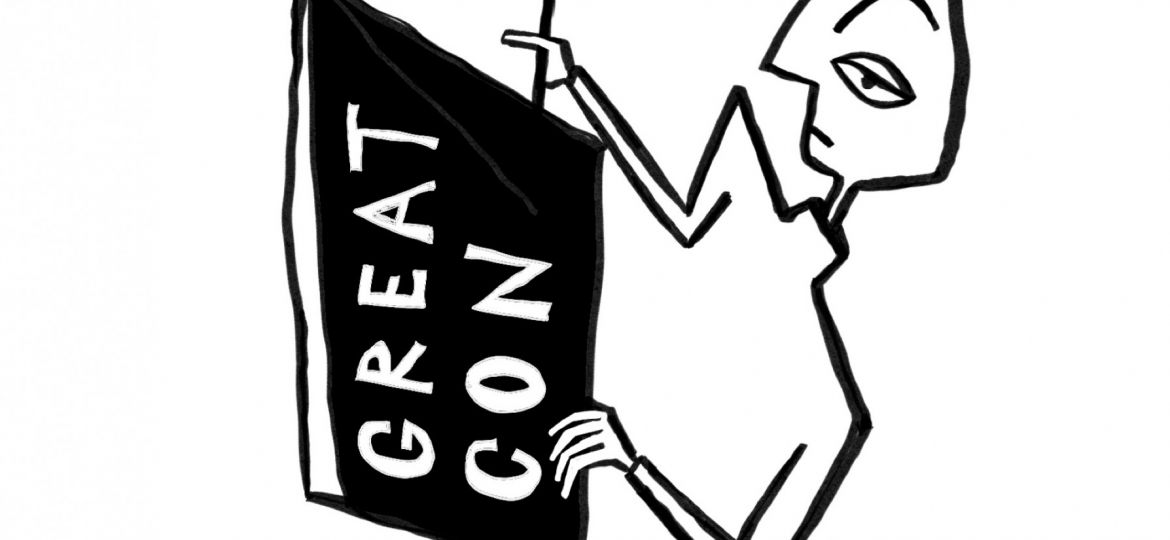
As the Great Conversation’s curriculum stands now, whiteness and maleness are lifted up as the pillars of Western civilization. An article published last week in the Olaf Messenger bears witness to this legacy of white privilege and misogyny; the critiques of the Great Conversation are as old as the program itself. The Great Conversation needs to move past the prejudices that framed it when it was founded.
We often think of the economic uplift a college degree provides; college graduates will earn over a million dollars more than their non-college grad counterparts. But, college also serves a cultural purpose. A liberal arts education instills cultural knowledge into its students. Graduates leave their college’s halls with the newfound capacity to engage with art, decipher the news, and hold conversation at dinner parties.
Colleges and universities face an imperative task when they develop their curriculum. The culture they present to their students is the culture their graduates perpetuate and uplift. Academic programs, like the Great Conversation, must become more capacious.
In the most recent round of Great Conversation, students from the Class of 2022 studied from a five-semester syllabus dominated by male-writers; 93 percent of their assigned readings were written by men. The faculty and staff running the Great Conversation have only increased female representation by four percent since the program’s inception in the 1980s. This is unacceptable.
Although the Great Conversation program has been cycling through students for the past four decades, there has been a constant emphasis on texts written by white people. Under its current structure, the program teaches the intellectual history of the world as though it emerged from Plato and was carried on by a Western canon of writers, playwrights and artists.
The Great Conversation needs to recognize that it cannot present itself as a so-called great conversation while marginalizing Black, Indigenous and people of color’s voices. In the most recent round of the Great Conversation, only 12 percent of the writers were BIPOC. This program sends its students into a world filled with white-supremacist movements and systemic racism. St. Olaf College needs to give its students a holistic education that does not exclude “inconvenient” perspectives on Western society.
When the program amplifies BIPOC voices, it must do so in a capacity beyond historical documentation. We can read Olaudah Equiano’s narrative on slavery, but we also need to read creative work by BIPOC individuals. We need to hear more stories from indigenous peoples. We need to read translations of texts that are groundbreaking in their native languages.
Further, the title of Great Conversation creates an inherent hierarchy amongst the conversation programs, with itself at the top. The conversation programs at St. Olaf are designed to fill in the gaps left by the others. For instance, Asian Conversation can discuss texts and cultural pieces that the American Conversation misses. This filling-in-the-gaps method of structuring an education system becomes problematic when one conversation — which almost exclusively highlights old white men — is prioritized above all others.
During our final day in our rotation of the Great Conversation, we finished up our final conversation and broke into a nostalgic discussion on our favorite texts. We went around in a circle and talked about how Dante or Plato or whoever had left an indelible impression upon our very being. However, one name came up over and over again: philosopher Hannah Arendt.
Arendt wrote the book “Eichmann in Jerusalem,” which you’ll find scattered around the liberal arts’s curriculum. She recounts the trial of Adolf Eichmann, a Nazi bureaucrat. The story warns of complacency in the face of everyday evils. Arendt’s overwhelming effect on our cohort reinforces two final messages.
First, despite her place in the seven percent of female authors in the Great Conversation, Arendt’s placement in the Great Conversation canon was not to gain a woman’s perspective. She is given the same credibility as the numerous old white men who never have to justify their place in the room. She wasn’t there to talk about the female experience; she was there to contribute her intellectual insights on an ongoing conversation. Academic programs such as the Great Conversation need to intentionally create space for women within this telling of history.
Second, modern scholarship can be used to amplify discussions on ancient thinkers while bringing historically marginalized perspectives into the conversation. We may not have extant writings from a woman during Plato’s time, but we can learn how Plato informs the modern female experience. We need to end our unquestioning veneration of “the greats” and open the conversation programs to more contemporary thinkers who pull back the curtain to reveal flawed and honest portraits of the men sitting behind these iconized texts.
The Great Conversation needs more voices like Arendt. Her words represent the critical gaze that the Great Conversation has shied away from for the past 40 years. Students need to hear the voices that history’s recorders ignored. Contemporary writers can help unearth these stories, amplifying the voices of women and BIPOC individuals who were denied the space to speak their mind or posthumously erased from the narrative.
Indoctrinating a white-washed history in higher education perpetuates a culture in the United States that takes whiteness as the norm. The Great Conversation needs to stop equating white culture with greatness.
imdiek1@stolaf.edu
Amy Imdieke ’21 is from Northfield, M.N. Her majors are Chemistry and English.
brink4@stolaf.edu
Brennan Brink ’21 is from Rapid City, SD. His majors are
Ancient Studies and Religion.

